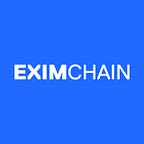A new way to govern blockchains for enterprises
Blockchain may be grabbing all the headlines today, but in the real world, an enterprise seeking to deploy the groundbreaking technology might find questions in its central promise.
While it can provide a decentralized ledger, thereby reducing risk, there remain worries that the technology has yet to face groups that are large, powerful and determined enough to take it over.
So, instead of helping decentralize business processes, replacing the roles of brokers and banks in the past, the technology could be turned on its head if the blockchain is broken. It cannot function if trust is lost.
Bitcoin, the most well-known use of blockchain, is an example. Researchers have warned that a large pool of nodes may be operated by a small number of users who together possess most of the hashpower, or the computing strength, behind the network.
This could allow them more control over the blockchain than other smaller groups of users would be comfortable with. For Bitcoin, this should worry owners of the cryptocurrency, because if one party manages to control the network, it could disrupt the blockchain and the cryptocurrency as well.
For enterprises, a similar worry exists for those seeking to deploy blockchains in their everyday operations, say, to draw up smart contracts between partners or to help ensure the correct flow of goods in a global supply chain. They do not want these to be disrupted.
What is needed is a new governance mechanism, for enterprises whose business will depend on the technology in future. They need a system that is dynamic and robust enough to deter those seeking to disrupt it.
One way forward is through a consensus mechanism that uses quadratic voting. Invented by Glen Weyl’s, quadratic voting provides a better way to make collective decisions that avoids the tyranny of the majority. It allows people to express how strongly they feel about an issue rather than just whether they are in favor of it or opposed to it.
On a blockchain, this prevents a single group from quietly taking it over. That is because a user has to purchase votes for or against a proposal by paying into a fund the square of the number of votes that he or she buys. At the end of each governance cycle, all tokens cast as votes are redistributed evenly between the voters.
It will take a group many cycles and a costly number of tokens to take control, likely alerting the rest of the blockchain users to the issue to take action. Building this into a blockchain, as EximChain has done, guarantees network security. Plus, it ensures that the blockchain remains truly distributed and better protected from attacks.
This will not work in isolation, either. Having users sign up via a KYC (Know Your Customer) process also helps to govern a blockchain effectively. This means a group of users aggressively trying to take over a blockchain can be easily identified. Essentially, it helps ward off anonymous attacks or unforeseen disruptions to the blockchain.
To be sure, not all blockchains require such vigorous checks built in. Certainly, not every type of data has to be connected via a blockchain. Some uses of data do not require the immutable characteristic provided by a blockchain.
If every party in a system is trusted, say, if they are subsidiary companies within a group, then there may not be a need for a blockchain or the checks that come with it. The same for a company is already trusted by all the parties that it works with.
However, a blockchain will be helpful in a global supply chain, where many parties, from manufacturers to logistics operators, are connected across the world in the delivery of a product.
This way, a supplier’s reliability and reputation can be verified easily. With a solid record, a supplier can access the credit it needs to fulfill orders. Meanwhile, logistics partners share demand and inventory information across a common ledger and financiers gain more visibility into the global supply chain, so they can extend credit to more small and medium enterprises (SMEs).
All this can be done without spending time, money and effort on verifying one another or manually trying to reconcile two different databases or ledgers. As more players come onboard, the network effects would bring more efficiencies in a trusted, connected network.
They will be able to create decentralized ledgers, reduce transaction costs, and securely share information and value in real time, without going through a centralized agent or trusting intermediaries.
For that to happen, the trust in the way the blockchain is run has to be rock solid. This is achieved through a transparent and resilient governance mechanism that guarantees the necessary security.
And this is the reason Eximchain has built quadratic voting in a blockchain to be used by global supply chain players. It brings a level of reliability and security that rival blockchain offerings struggle to offer.
More importantly, it answers a big question for an enterprise going beyond simply running proofs of concept on blockchain. There has to be trust in a technology built on a solid foundation.
About Eximchain
Eximchain enables businesses to connect, transact, and share information more efficiently and securely through our blockchain utility infrastructure. Using Eximchain blockchain technology, enterprises can eliminate traditional supply chain barriers and integrates actors big and small into an efficient, transparent, and secure global network.
